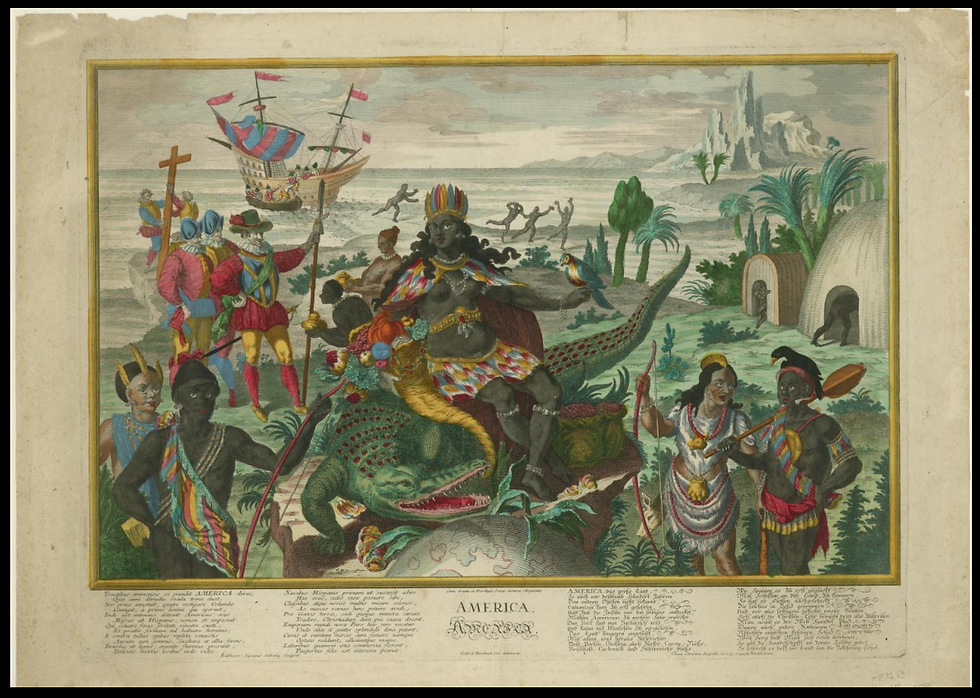Mound Builders Were "Negro", and So Are Their Descendants
- chiefivy3
- Aug 8, 2022
- 3 min read
The general narrative pertaining to the history of the Mound Builders of North America would lead many to believe that the Mound Builders themselves were of Eurasian descent or rather the ancestors of modern day "Native Americans". Taking a deeper dive into existing information, and utilizing logic would lead you to the conclusion that the Mound Builders of North America would have indeed been classified as "Negro", "Black" or "African". The Mound Builders of yesteryear are the ancestors of a vast majority of the modern day "Blacks" or "African Americans" we see today throughout the Southeast and along the Mississippi river.

The yellow pins in the Google Earth Map shows commonly known mounds throughout the US. Some scholars claim millions of mounds were identified throughout the US. At least 10,000 mounds were identified in the Ohio Valley alone.
Within the notes section of the 1838 French publication titled, Voyage En Emaerique, Suivr Des Natchez, by Par M. Le Vicomte De Chateaubriand, from De I. Academie Francoise (translated: Journey in America, Aftercarde Des Natchez; By M. The Viscount from Chateubriand, from I. Academie Francoise), it was documented that numerous skeletons were excavated from the various "tumuli" French explorers uncovered (CITE). Tumuli is plural, and means mounds of earth. The following excerpts are translated from French to English. Par M. Le Vicomte De Chateaubriand wrote, "A very large human skull, depicted in archeologia has many characters of the African Negro race". He goes on to say, "The American scientist who provided us with this fact thinks he has observed, in the shapes of this skeleton, and especially of the facial angle, a great similarity "with the race of The Malays who inhabit the islands of the Great Pacific Ocean." Similar mummies (as they are called in America) have been found in East Tennessee". In short, French explorers uncovered mummies from numerous mounds and identified them as having "Negroid" features.

Another publication by M. Le Page (CITE) and translated by Du Pratz states, "Le Page spent eight years among the Natchez and what he wrote about them -- their lives, their customs, their ceremonials -- has been acknowledged to be the best and most accurate accounts we have of these original inhabitants of Louisiana".
Le Page provides descriptions of both, the men and women of the Mississippi area. He states, "All the natives of America in general are extremely well made" and that "the women more plump and fleshy" and that the women had "thick black hair without curls" and that they would "make a great noise in winter by beating the water in order to frighten away the crocodiles". The image below is a visual representation of Le Page's description.

DESCRIPTION: Allegorical figure of America as a native American woman seated on a an alligator holding a cornucopia and a parrot and attended by four figures representing different native American peoples. In the background, European soldiers arrive from a ship and erect a cross, and are greeted by native Americans with golden vessels. Cultural artifacts include war clubs, feathered headdresses and garments, ornaments, bows, spear, bird headdress, and dwellings. Also includes a wolf, sphere, shells, sacks of gold (?), and boat. Click on the link below (#3) for more details about this image.
Europeans did NOT bring millions of "African slaves" to North America. Europeans arrived and encountered the original peoples of North America by way of excavating earth mounds, living among the tribes for years at a time, or simply conducting business through trade. Clyde Winters tells us in his publication titled: Who Were The Mound Builders in The United States that "These mounds were built between A.D. 700 and 1700. Temple Mounds were build in the central Mississippi Valley, Arkansas, southern Missouri, southern Illinois and western Tennessee. All of these regions of the Southeast were inhabited by Black Native Americans".
SOURCES:








Comments